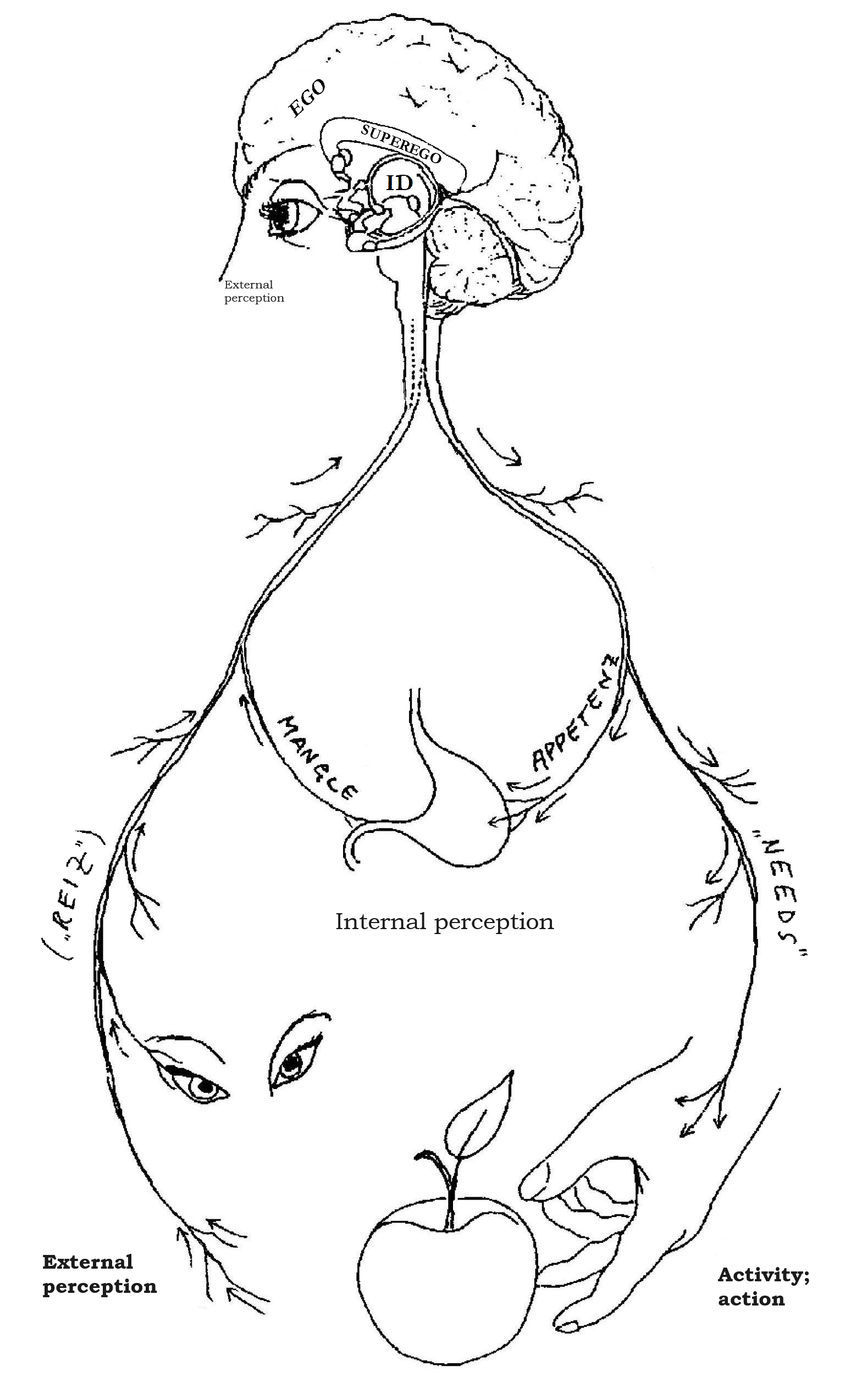Many conceptions of the self revolve around the brain and the mind; thus, it is no surprise that the question of 'self' has been tackled by psychologists like Jung, Freud, and others.
Sigmund Freud
Sigmund Freud proposed one of the most well-known (perhaps 'infamous' would be a better word) theories on the concept of self within psychology: the division of the psyche into three parts, known as the id, ego, and superego. These three terms are initially brought together in his essay The Ego and the Id. Freud places significant importance on the part the ego plays in this three-part act, seeing it as "the locus of what is conscious" (Quinodoz 73). According to Freud's theory, the ego serves as a mediator between the desires of the id and superego, and as the self's intermediary with the external world. In this way, the self is made up of the interactions and dynamics between the three parts of the psyche, as well as the pressures of the outside world.

Carl Jung
Carl Jung's theory of the self divides the psyche into two parts: the unconscious mind and the conscious mind. Within the unconscious mind, there exists the personal unconscious and the collective unconscious. The personal unconscious, according to Jung, is made up of a person's memories and unique experiences. In contrast, the collective unconscious is inherited, made up of a series of archetypes that "determine individuals' perception of the external world" (Karakaş, Ülkem, and Karaaziz 5); in other words, archetypes help a person structure how they interact with and see their environment.
Jung's archetype of the self is representative of an individual's entire psyche. The self, according to Jung, unifies the conscious and unconscious minds and allows an individual to compromise between potentially conflicting parts of their personality.
Comparisons and Contrasts
There are some similarities between these two interpretations of the self; obvious, given that Jung was a student of Freud's and likely took inspiration from his theories. Notable is the separation of the self/psyche into multiple parts, typically encompassing a conscious and unconscious. Both psychologists emphasize that the self comes from some sort of unification/cooperation between the divided parts of the psyche.
One significant difference between these interpretations of the self is the importance of the influence of the external world. While Freud's ego mediates between the self and the external world, it has no influence on the id or the superego, and the self in his theory primarily consists of an individual's own personal thoughts and experiences. In contrast, Jung's collective unconscious centers around the influence of the external world on an individual's self. His concept of archetypes, which make up the collective unconscious, is his answer to the lack of external influence presented in Freud's theory of the self:
We are not people of today or yesterday, we are people of a vast age.